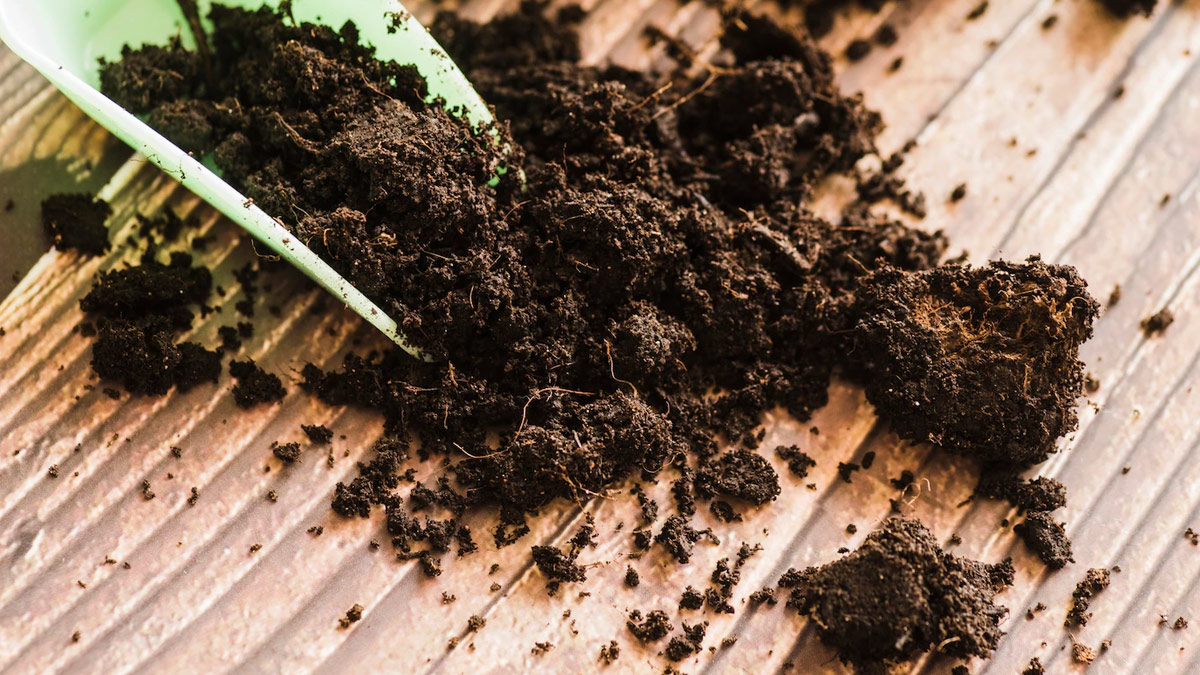What are Organic Fertilizers?
Organic fertilizers or natural fertilizers are mineral sources produced naturally containing a sufficient amount of plant nutrients. Organic fertilizers are added to the soil which promote the growth of soil micro-organisms, retain more water and nutrients, thus improving the overall growth of the plant. If your soil lacks nutrients then your plant cannot thrive properly, the leaves may fall or turn yellow or the plant can die. Nitrogen (N), phosphorus (P) and potassium (K) also called macronutrients are the main nutrients in natural fertilizers. Each fertilizer has a ratio of these nutrients called NPK ratio. This NPK ratio is very important in deciding what you want to achieve from your plants. Nitrogen is required for growth of foliage, that’s leaves of the plant. Phosphorus is important for root, flowering and fruiting. Potassium helps to regulate the important functions of a plant and make it healthy.
Other macronutrients are calcium (Ca), magnesium (Mg), and sulfur (S). Magnesium promotes vegetative growth, green leaves, and sugar formation. Calcium promotes the structure and strength of plants, new cells, growth and resistance to disease. Sulfur promotes green leaves, fruit and seed maturity.
Micronutrients are also important and include boron (B), chlorine (Cl), copper (Cu), iron (Fe), manganese (Mn), molybdenum (Mo), sulphur (S), zinc (Zn) and many more. These nutrients promote leaf color, growth and starch formation.
List of organic or natural fertilizers:
Cow Dung Manure
Cow dung manure is a nutrient-rich organic fertilizer. It is the waste product (feces) of domestic animals like cows, bison, yak and buffalo. It is rich in N-P-K value and contains important micro-organisms that help in improving soil health and plant growth.
- Benefits of cow dung manure: It improves the moisture holding capacity and aeration of the soil. It helps plant roots to absorb nutrients present in the manure.
- Composition of cow dung manure: It has a NPK ratio of 3:2:1 (3% nitrogen, 2% phosphorus, and 1% potassium).
- How to use cow dung manure: It should be used in the ratio of 3:1 means 3 part soil and 1 part manure.
Vermicompost
Vermicompost is made with the help of earthworms converting the organic waste into manure. Earthworms feed on organic waste and produce excreta rich in nitrates and minerals such as phosphorus, potassium, calcium and magnesium.
- Benefits of vermicompost: 100% organic compost, restores soil nutrients, easily absorbed by plants, stabilizes soil, and enhances soil fertility at a long-term period
- Composition of vermicompost: It has a NPK ratio of 2:1:1 (2-3% nitrogen, 1.55-2.25% phosphorus and 1.85-2.25% potassium)
- How to use vermicompost: If you are preparing the soil mix for the new pot, it should be in the 1:1:1 ratio i.e. a part of soil, a part of coco-peat, and a part of vermicompost. If the plant is already in the pot, just take out 1/2 inches of soil and add the same amount of vermicompost.
Organic Micronutrient Granules
This fertilizer contain both macronutrients and micronutrients. Micronutrients are required in very small quantities but are very important for plant growth and development processes.
- Benefits of micronutrient granules: This is a complete fertilizer for any kind of plant as it contain almost all types of nutrients.
- Composition of micronutrient granules: It has primary nutrients (nitrogen, phosphorus, potassium), secondary nutrients (calcium, magnesium, sulphur) and micronutrients (boron, chlorine, cooper, iron, manganese, molybdenum, and zinc).
- How to use micronutrient granules: Use 1 teaspoon per plant once in a month.
Blood Meal
Blood meal fertilizer is a dry, inert powder made from animal blood. It is high in nitrogen, and low in other elements.
- Benefits of blood meal: It is very fast acting fertilizer which can be used to quickly heal ailing plants with nitrogen deficiency
- Composition of blood meal: It has a NPK ratio of 13.25:1.5:.6 (13.25% nitrogen, 1.5% phosphorus and .6% potassium)
- How to use blood meal: Use 1 teaspoon near the roots of the plant and you should see the results within 2 weeks.
- Caution: One important point to remember while using blood meal as it is highly acidic and over dose can burn your plant.
Bone Meal
Bone meal fertilizer is made from animal bones and it comes in a meal or powder form. This is rich in phosphorous and very important for strong roots and healthy flowering and fruiting.
- Benefits of bone meal: It helps building a strong root system and healthy flowering and fruiting.
- Composition of bone meal: It has a NPK ratio of 4:20:0 (4% nitrogen, 20% phosphorus and 0% potassium).
- How to use bone meal: One table spoon per medium sized container.
Chicken or Poultry Manure
Chicken manure is made from the feces of chickens. It is an excellent source of nutrients as it contains almost all the essential plant nutrients that include nitrogen (N), phosphorous (P), potassium (K), calcium (Ca), magnesium (Mg), sulfur (S), manganese (Mn), copper (Cu), zinc (Zn), chlorine (Cl), boron (B), iron (Fe), and molybdenum (Mo)
- Benefits of chicken or poultry manure: It is very fast acting fertilizer which can be used to quickly heal ailing plants with nutrient deficiency.
- Composition of chicken or poultry manure: It has a NPK ratio of 4:3:3 (4.55 to 5.46 % nitrogen, 2.46 to 2.82% phosphorus and 2.02 to 2.32% potassium).
- How to use chicken or poultry manure: Use small amount of it near the roots of the plant and you should see the results within 2 weeks.
- Caution: One important point to remember while using chicken or poultry manure as it is fast acting and hence over dose can burn your plants.
Epsom salt fertilizer
Epsom salt is a natural mineral salt that possesses the best source of magnesium. Chemically it is know as magnesium sulphate (MgSO₄). It increases chlorophyll because magnesium is the center atom between four nitrogen atoms in the chlorophyll molecule.
- Benefits of epsom salt: Chlorophyll is very essential for photosynthesis and it increases chlorophyll also it helps seeds germinate, produces more flowers, makes plants grow bushier, deters pests etc.
- Composition of epsom salt: This is the best source of magnesium for plants.
- How to use epsom salt: Mix the necessary amount of epsom salt with water and spray it on the leaves specially in the spring when new leaves emerge, and again after flowering. Epsom salts can also be added to water while watering the plants.
Fish meal fertilizer
Fish meal fertilizer is made from fish and fish bones. It is high in nitrogen but also has decent amounts of phosphorus and calcium as well.
- Benefits of fish meal: It is very fast acting fertilizer which can be used to quickly heal ailing plants with nutrient deficiency
- Composition of fish meal: It has a NPK ratio of 5:2:2 (5% nitrogen, 2% phosphorus and 2% potassium)
- How to use fish meal: Use small amount of it near the roots of the plant and you should see the results within 2 weeks.
- Caution: One important point to remember while using fish meal as it is fast-acting fertilizer and over dose can burn your plant.
Rock Phosphate fertilizer
Rock phosphate is a a naturally-occurring fertilizer. It is a vegan alternate to bone meal fertilizer. It is highly rich in phosphorous.
- Benefits of rock phosphate: It helps building a strong root system and healthy flowering and fruiting.
- Composition of rock phosphate: It has a NPK ratio of 0:20:0 (0% nitrogen, 20% phosphorus and 0% potassium)
- How to use rock phosphate: Use 1 or 2 teaspoon per plant once in about 3 months.
Seaweed fertilizer
Seaweed fertilizer is made from seaweed that is used to increase soil fertility and plant growth. It is high in potassium and also has plenty of micronutrients like zinc and iron. It is available either in granules or liquid extract.
- Benefits of seaweed: This is fast-acting fertilizer that increases soil fertility and plant growth.
- Composition of seaweed: It has a NPK ratio of 2:1:4 (2% nitrogen, 1% phosphorus and 4% potassium)
- How to use seaweed granules: Add half to one teaspoon seaweed granules per plant once in a month.
- How to use seaweed liquid extract: Use 10 ml per liter of water and spray it on the leaves specially underside of it, because the openings (stomata) are more in number on the underside.
Humic acid fertilizer
Humic acids is one of the final break-down constituents of the natural decay of plant and animal materials. It is a growth enhancer and provides plants and soil a concentrated dose of essential nutrients, vitamins and trace elements by breaking complex nutrient compounds in the soil. It reduces the fertilizer usage by up to 30% and increases flowering and fruiting by up to 70%.
- Benefits of humic acid: Humic acid is a growth enhancer. It chelates complex nutrient compounds so that roots can absorb nutrients more efficiently.
- How to use humic acid: 1 teaspoon per liter of water, mix it well and use 1 cup (250 ml) per plant.
Neem cake and neem cake powder
It is an organic fertilizer as well as a good soil pesticide. It is the left over product after neem oil extraction and rich in essential elements like NPK (Nitrogen, Phosphorous, Potassium), organic carbon etc.
- Benefits of neem cake: It is cost effective and rich in nitrogen, potassium, phosphorous, micro and macro nutrients. It is a good soil pesticide as well.
- Composition of neem cake: It has a NPK ratio of 4:1:2 (4% nitrogen, 1% phosphorus and 2% potassium) also it has crude protein, carbohydrates, crude, fat, ash, calcium, magnesium etc.
- How to use neem cake: While preparing potting mix use 10% of neem cake fertilizer. You can also sprinkle it around your existing plants. You can also make a liquid fertilizer by adding one tea cup of it per liter of water and allow it to brew for at least 24 hours and then water your plant directly or by further diluting in water.
Mustard cake and mustard cake powder
Mustard cake fertilizer is the left over product after mustard oil extraction and it is rich in potassium, nitrogen, protein, magnesium, sulfur, and phosphorus.
- Benefits of neem cake: It is cost effective and good for flowering and vegetable plants. It is rich in protein, micro nutrients and prevents many diseases.
- Composition of neem cake: It has a NPK ratio of 4:1:1 (4% nitrogen, 1% phosphorus and 1% potassium).
- How to use neem cake: Add 500 gm mustard cake in 15 liters of water, mix it well and soak it for 24 hours. Add 1 cup per plant per week.





